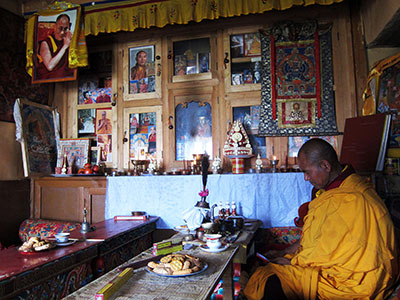
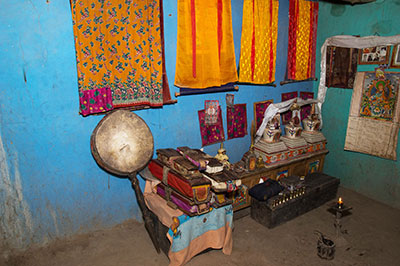

Home shrine of Karsha Lonpo, Zanskar, India (R. Bloom)
Private temple, Zanskar, India (N. Martin)
Private temple, Ladakh, India (N. Martin)
Domestic Shrines
Tibetan Buddhist households typically contain a shrine that is the center of private religious ritual. Ranging from a simple altar to an entire dedicated room, these spaces hold the objects, texts, and implements used in daily practice. Each morning, the shrine's keeper chants mantras and prayers while filling seven bowls with water, lighting butter lamps, and burning juniper incense as offerings. The objects of worship are images of buddhas, bodhisattvas, protectors, and lamas. Depictions of one’s own teacher, the Dalai Lama, Avalokiteshvara, and the Buddha are common in domestic shrines, depending on the household’s personal and sectarian affiliation.

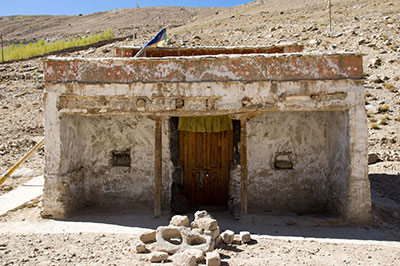
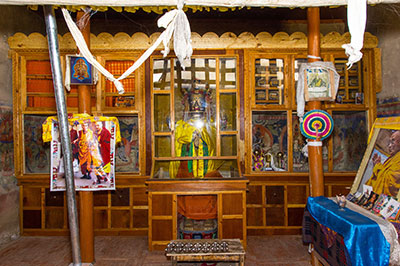
Village shrine, Hikkim, Spiti, India (R. Bloom)
Village temple, Bardan, Ladakh, India (N. Martin)
Inside of village temple, Bardan, Ladakh, India (N. Martin)
Village Shrines
Many villages throughout Tibet and the Himalayas have small public shrines that are used and maintained by community members. Whether a room in a central building or a freestanding temple, the shrine is its village’s sacred center. Inside, deities particular to that place and clan are often worshiped alongside the wider Buddhist pantheon. These shrines are both important ritual spaces and repositories of regional history and artistic treasures. By preserving locally created and collected texts and objects, the village shrine protects its community’s unique religious and artistic heritage.
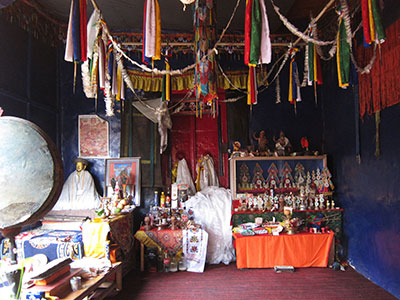
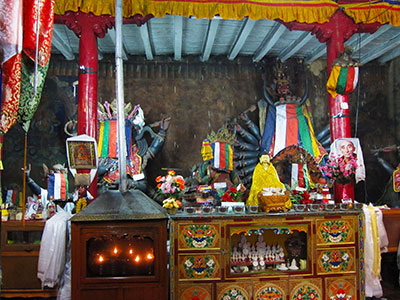
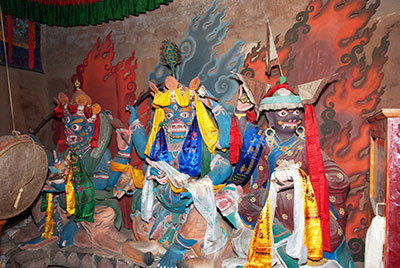
Entryway to gonkhang, Chemrey Monastery, Ladakh, India (R. Bloom)
Gonkhang, Namgyal Tsemo Monastery, Leh, Ladakh, India (R. Bloom)
Wrathful protectors, Sengge Lhakhang, Lamayuru Monastery, Ladakh, India (N. Martin)
Wrathful Shrines
Within monasteries and large temples, terrifying forms of local protectors, awakened beings, and various buddhas inhabit a separate shrine known as a gonkhang, or “protector’s house.” These wrathful deities are believed to reside within their images, empowering sculptures and paintings with potentially dangerous energies. Access to the gonkhang therefore is often restricted to those with special initiations. Even in open wrathful shrines, images of deities are veiled to contain their power and protect viewers. Grotesque offerings, such as flayed skins and entrails, that appease fearsome protectors and buddhas typically decorate a gonkhang’s walls.
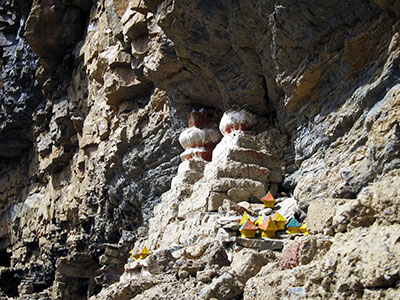
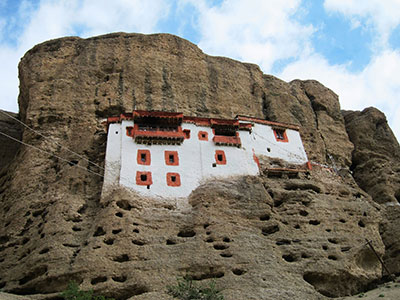
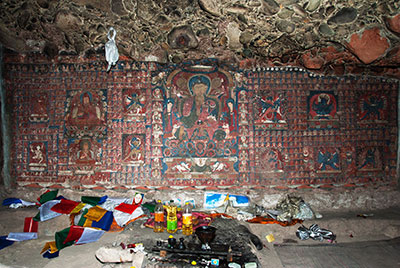
Ruinous meditation caves and stupas, Komik, Spiti, India (R. Bloom)
Shargol cave temple, Ladakh, India (R. Bloom)
Cave shrine, Saspol, Ladakh, India (N. Martin)
Cave Shrines
Far away from the distractions of monastic or domestic life, the caves found throughout Tibet and the Himalayas have traditionally been preferred places for intensive meditation practice. Advanced practitioners of Tibetan Buddhism are encouraged, even required, to spend time in seclusion. To aid meditators, caves are sometimes decorated with sacred images, transforming empty spaces into living shrines. Sites where important teachers have meditated gain further empowerment from their famous inhabitants’ spiritual accomplishments. These caves are potent places of worship, where people travel to receive blessings and perform meditation on hallowed ground.
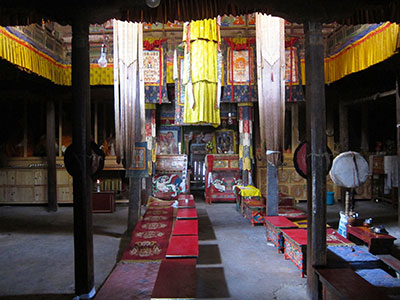
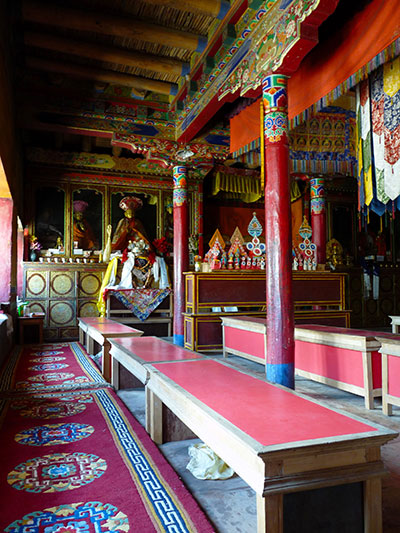
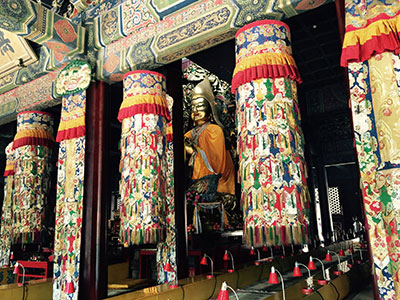
Assembly Hall, Sani Monastery, Zanskar, India (R. Bloom)
Assembly Hall, Lamayuru Monastery, Ladakh, India (M. Adamski)
Assembly Hall, Lama Temple, Beijing, China (A. Kandell)
Monastic Shrines
Every Tibetan Buddhist monastery features a large assembly hall where both monks and laypeople conduct major rituals. Many altar spaces are built along the walls of these buildings and in their small adjacent chapels. Universally revered buddhas and bodhisattvas, as well as the main teachers and deities associated with the monastery, are worshiped in these shrines, their images filling the altars. Ornamented shelves holding the texts of the Tibetan Buddhist canon also comprise a shrine, where the words of the Buddha and his enlightened interpreters are venerated.
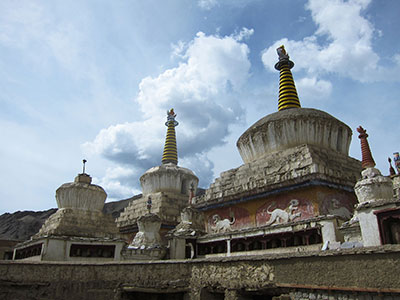
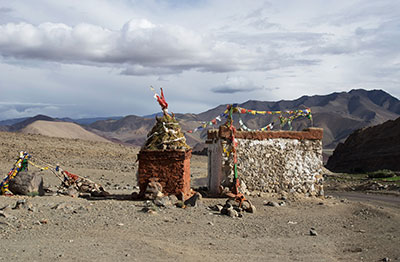
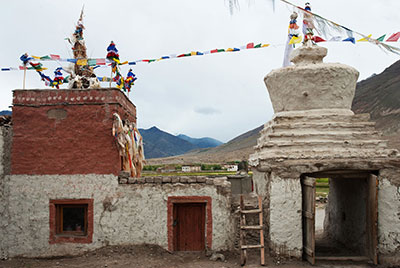
Stupas, Lamayuru Monastery, Ladakh, India (R. Bloom)
Lhato, Nyoma, Ladakh, India (N. Martin)
Lhato and stupa gate, Sani Monastery, Zanskar, India (N. Martin)
Shrines of Place
The landscape of Tibet and the Himalayas is dotted with stupas and lhato, structures that both mark and make sacred sites. As markers, stupas and lhato are shrines built in places identified as holy in Buddhist lore or local traditions. As makers, their contents—sacred materials and divine presences—sanctify both the structures and their locations. These shrines therefore connect the Buddha to the local landscape and strengthen the bond between regional deities and their domains. Stupas and lhato are places of contact between the human and the holy, where worshipers can access the worshiped.